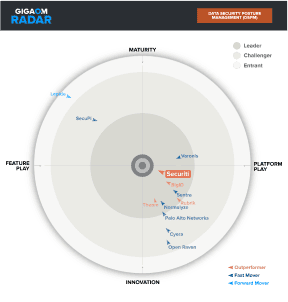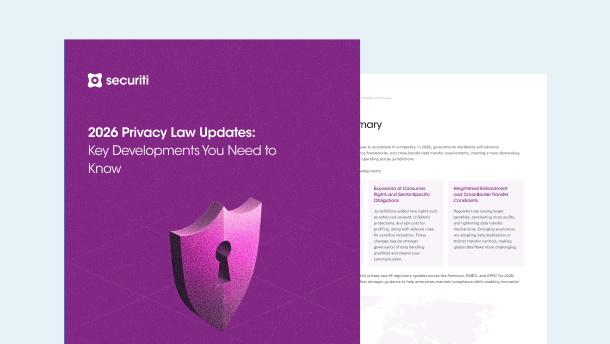Data Governance Use Cases
A robust data governance infrastructure has a lot to offer to any organization. A key component is a centralized, searchable repository that enables data discovery, literacy, and collaborative analytics. It can help with better communication and collaboration between various teams internally. Additionally, it offers companies the ability to:
Maintain Data Lineage
Data governance is crucial for maintaining robust data lineage.
As mentioned earlier, data lineage helps track the source and movement of data along with its transformation over time. It is further required to ensure that data is trustworthy, reliable, and accurate. Clear insights into data lineage are necessary not only for meeting compliance but also for mitigating risks and decision-making.
With effective data governance, data teams can have a clear understanding of where data comes from, how it is transformed, and where it goes. With a comprehensive picture of the entire data flow, it is easier to identify any issues or errors that may arise during data processing. Moreover, data lineage insights further enable data teams to maintain appropriate controls over data access and usage.
Optimize Decision-Making
For most organizations, one of the data's primary purposes is to dictate business decisions. On paper, this is a sound strategy, but it relies on appropriate mechanisms in place that guarantee data is easily discoverable, accessible, and of high quality. A robust data governance infrastructure ensures all authorized users have access to the same high-quality data, eliminating the need for data silos within the organization. This helps eliminate errors associated with decision-making caused by duplicate data, and differing views of data. Strong data governance practices also foster better coordination between different teams, resulting in better decision-making.
Streamline Compliance
While data governance ensures better data quality, it also makes compliance easier. A strong data governance solution allows an organization to store, maintain, and use its data assets per the laws and regulations that govern how organizations are expected to keep data secure.
More importantly, with newer data privacy regulations coming into effect more regularly now than ever before, a reliable data governance solution provides organizations with a proactive framework that ensures their data practices remain compliant with any new requirements and obligations.
Definition of Data Security
Data security refers to the practices, policies, and procedures that an organization puts in place to protect its data from any sort of unauthorized access, theft, modification, or duplication.
More importantly, with most organizations now adopting a multi-cloud strategy as far as their data infrastructure is concerned, data security must also account for this crucial factor. While there are numerous benefits to adopting a multi-cloud strategy, it also leaves an organization vulnerable to several rather serious security risks. Addressing these risks is more complex, owing to the unique challenges posed by a multi-cloud environment.
These challenges include:
- Different cloud providers have different security settings, options, tools, standards, and limitations. This can create a bottleneck in gaining complete visibility of the potential threats an organization's data faces. More importantly, within a multi-cloud environment, this can leave teams without a single comprehensive view of the overall security posture of data assets which can lead to misconfigurations and issues with aligning their internal policies with privacy regulations and security standards.
- Organizations' employees are insufficiently trained in understanding the multiple cloud environments, leading to mistakes in security configurations. These issues can be further exacerbated by the inability of teams to gain a complete view of where their sensitive data asset is stored, who has access to it, how frequently it is accessed, and from where. Such a lack of insights poses a challenge when it comes to the development and implementation of appropriate access controls.
- Data security in a multi-cloud context requires a dynamic strategy. Since most cloud operators continuously release updates and introduce new features and services, an organization must be proactive in identifying any risks posed by these changes, with regular adjustments to all data security measures accordingly. If the potential risks cannot be identified clearly, organizations will struggle to eliminate potential blind spots within their existing data security policies and practices.
Data Security Use Cases
There are several benefits of having a robust data security infrastructure in place, such as proactively detecting and preventing any insider threats, monitoring any sudden changes in risk scores of a dataset, eliminating any possible blind spots by correlating risk score changes across the dataset, and in the event of a potential data breach, providing actionable insights to prevent any future such attacks. Additionally, data security lets organizations:
Safeguard Sensitive Data
Most organizations collect a large volume of data. While an organization is expected to ensure all the data it collects is protected appropriately, it must undertake additional precautions regarding sensitive data. With the right data security solution, organizations can not only adequately protect all such sensitive data but also avoid the reputational harm resulting from such data being compromised.
A robust and effective data security solution provides organizations with actionable insights related to their data, such as risk scores for every data asset, asset location, and personal data category. Using these insights, organizations may immediately remedy any security risk and adjust their data access policy to control access to data based on the type, sensitivity, system, location, and regulation.
Implement a Least-Privilege Access Model
The principle of least privilege (PoLP) is a fairly simple security concept that requires users to be given minimal access to an organization's data and systems required to fulfill their tasks. Though simple, the benefits of PoLP for an organization purely from a data security perspective can be enormous. It minimizes the vulnerability of an organization's data infrastructure if a hacker gains unauthorized access to an internal account. Similarly, it would limit the spread of malware across an organization's network to just the compromised workstation.
Leverage Data Breach Insights
In case a data breach does occur, organizations can still undertake several measures to limit the fallout from the breach. In the immediate aftermath, organizations can identify the individuals impacted by the breach and compromised data elements. With these insights, organizations may deliver timely notifications to impacted individuals as required by relevant data regulations and initiate relevant remediation efforts.
What Does the Future Hold?
The rapid adoption of multi-cloud and hybrid IT architectures presents organizations with new risks and challenges to their data security. Cloud service providers (CSPs) have their own processing architecture that gradually replaces traditional organizational data security perimeters.
However, as data is stored, accessed, processed, and shared across multiple CSP architectures in different geographical regions, it creates new data risks.
All these factors indicate automation as the most effective and efficient way to tackle an organization's data governance and security needs. More importantly, data governance and security must converge more aggressively if organizations are to tackle these distinct challenges more efficiently.
The Data Command Center framework represents a paradigm shift, allowing organizations to meet their data obligations across security, privacy, compliance, and governance.
How Securiti Can Help
As discussed earlier, data security and governance in a multi-cloud context represent a strategic and functional challenge for organizations. Automation presents the most viable and effective solution to both these challenges by removing the element of human error from all deployment and management processes.
Securiti's Data Command Center empowers organizations with a solid foundation for their data security, privacy, governance, and compliance workflows to ensure they effectively meet their data obligations.














































